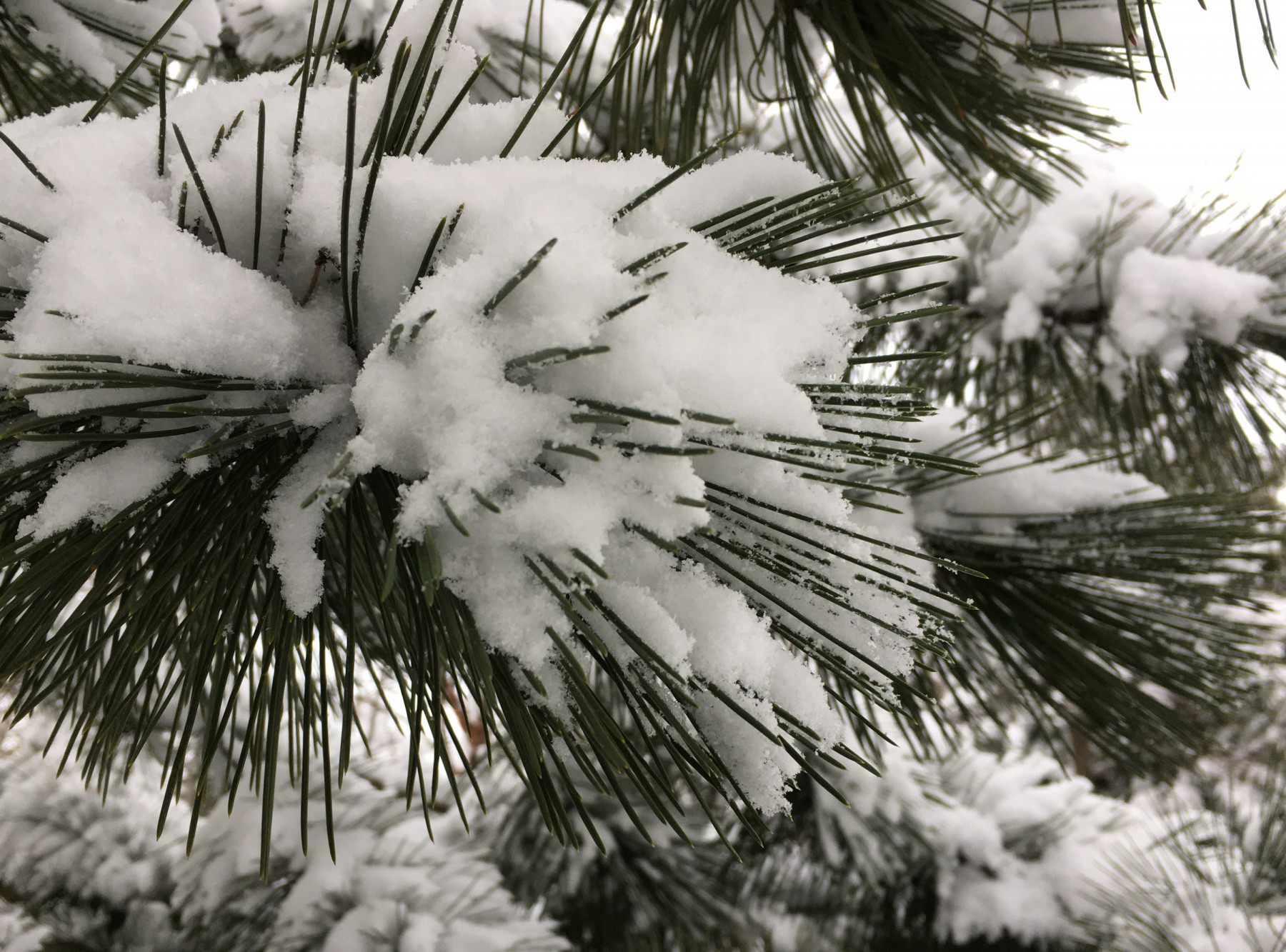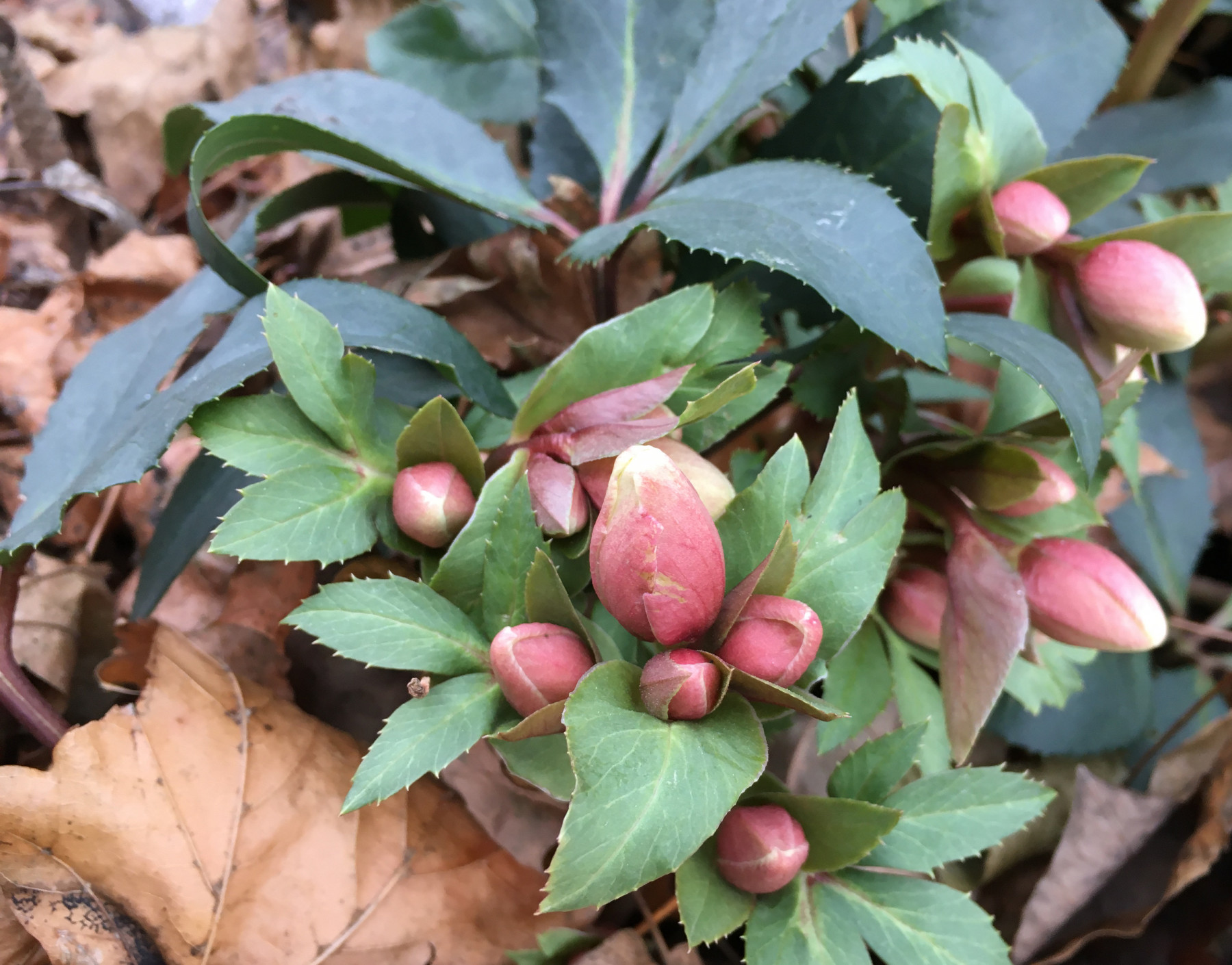
When the city has only the colors of brick, slush, and concrete, green is precious.
That’s why we plant evergreens. Just about every yard I see has some evergreen tree or shrub. There are tiny tidy boxwoods in pots. There are towering spruces. There are rows and rows of arborvitaes, the go-to plant for privacy screens in the Midwest. Anything for a little bit of green to remind us, in midwinter, that life goes on.
Yet it’s a tough life for a plant in a Chicago winter: the cold, dry wind; the polar cold snaps; the sudden heavy snows, or the winters when there’s no snow at all to protect leaves and roots from the polar cold snaps; the drought, because water is frozen into ice. So why be evergreen? Why not be deciduous, like an oak or a hydrangea? Why not store up sugars and starches in the roots every fall, lose the leaves, and go dormant until spring with bare branches that don’t feel the cold?
Evergreens have a survival strategy that evolved in places where resources are scarce. An oak or a maple in rich Midwestern soil can afford to abandon a whole season’s growth of leaves in autumn, because it will have enough water and nutrients next spring to grow a whole new set. But in high, dry, rocky mountains, forests near the Arctic, and other places where such resources are in limited supply, leaves are more costly to build. It’s worth hanging onto them for a few years, right through the winter.
The tradeoff is that long-lasting leaves are vulnerable to all of winter’s brutality. To protect their leaves from drying out, evergreens cover them with a stuff, waxy coating. The leaves of many evergreen trees and shrubs are thin and needle-shaped, which minimizes the surface area exposed to drying winds.
Plants that stay green in winter need water, because they’re still working. Whenever there’s a bit of sun and it’s not too cold, they will continue to photosynthesize, turning carbon dioxide and water into sugar for food. That water use adds to the drought risk.
In the Chicago region, where it’s safe to be deciduous, there are very few native evergreens. A Midwestern woods in winter is brown and dormant. Nearly all the evergreens that are planted in nearly every yard come from elsewhere, from Europe or Asia or the American West. They don’t always do well here; most evergreens come from drier places and need well-drained soil, and our soil is mostly sticky clay. Many of the most popular evergreen trees, such as blue spruce and Austrian pine, are often stressed and prone to disease. Yet the lure of that touch of green in winter is irresistible.

Many of the evergreen ground covers we plant, such as periwinkle and English ivy, are a mixed blessing. Because they do stay green and keep photosynthesizing and growing much longer than the dormant natives, plants such as periwinkle and English ivy are invasive. When they spread from gardens to natural areas, they out-compete the native wildflowers and other plants and are a major disruption to the ecosystem.
“Evergreen” is actually a relative term. Many plants that are considered evergreen in milder climates will lose their leaves or even die back to the ground in a climate with colder winters, or in any especially harsh winter. “Semi-evergreen” is the waffle adjective used for these borderline plants. In Chicago, needled evergreens are more reliable than broad-leafed plants such as boxwoods and some “evergreen” rhododendrons. Even so, we still see winter kill—needles or leaves that have dried out and died by spring.
When you’re choosing an evergreen, be sure to check the details. Make sure the plant is hardy in your USDA climate zone, or colder. In Chicago, an evergreen labeled for Zones 3 through 5 (Minnesota to Chicago, roughly) is safer than one labeled for Zones 5 through 8 (Chicago down to Tennessee). I don’t take the risk of plants that are on the edge of their tolerances.
Some people plant evergreens that are too tender, and then try to protect them by swathing them in burlap. I don’t see the point. Why plant an evergreen if you’re just going to look at burlap all winter?
The best help we can give our evergreens is with water and mulch. In autumn, keep watering them until the ground freezes so they can store as much moisture as possible in their roots, stems and leaves. And make sure that evergreens, like all plants, always have a nice, even layer of mulch over their roots, spreading it 3 to 4 inches deep in as wide an area as you can. That will insulate the soil and protect it from wide temperature swings, making the plant less vulnerable to bitter cold as well as unseasonable thaws. It will help evergreens stay green.


